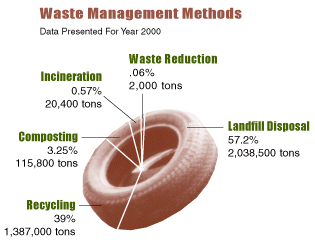Unit 5-2-3: Writing íV Assignment |
||
| http://www.cuyahogaswd.org/data/whathappens.shtml | ||
 Landfilling While landfill capacity is adequate to meet our needs, most of this capacity is located outside our county. In recent years, a number of landfills in CuyahogaCounty have closed and only two public facilities remain. The closure of our in-county landfills requires us to export 95% of the waste we produce, compared to just 20% in 1995. This has increased our reliance on waste transfer stations to consolidate trash prior to shipment to disposal facilities. Our trash currently passes through ten transfer stations in the county. A consequence of exporting waste is the high cost of transferring waste from collection vehicles to long haul trailers and trucking trash to distant landfills. Recycling & Waste Reduction Over the past ten years, communities have responded to their residents' desire to recycle by implementing curbside and drop-off recycling programs for newspaper, glass, metals, and plastics. Roughly 84% of the households in our county are serviced by community- sponsored programs. Meanwhile, commercial businesses, institutions, and manufacturers have access to numerous recycling facilities to recycle their office paper, cardboard, scrap metals, packaging materials, and plastics. Composting Incineration of waste in CuyahogaCounty is minimal. Less than 1% is handled this way. While some incineration units remain in hospitals, waste water treatments plants, grocery stores and crematories, the trend in recent years has been to close these units because of stringent air pollution regulations and high maintenance and operational costs. This trend applies to Ohio in general, where inexpensive landfill disposal has caused the closure of most waste incinerators large and small. |
||